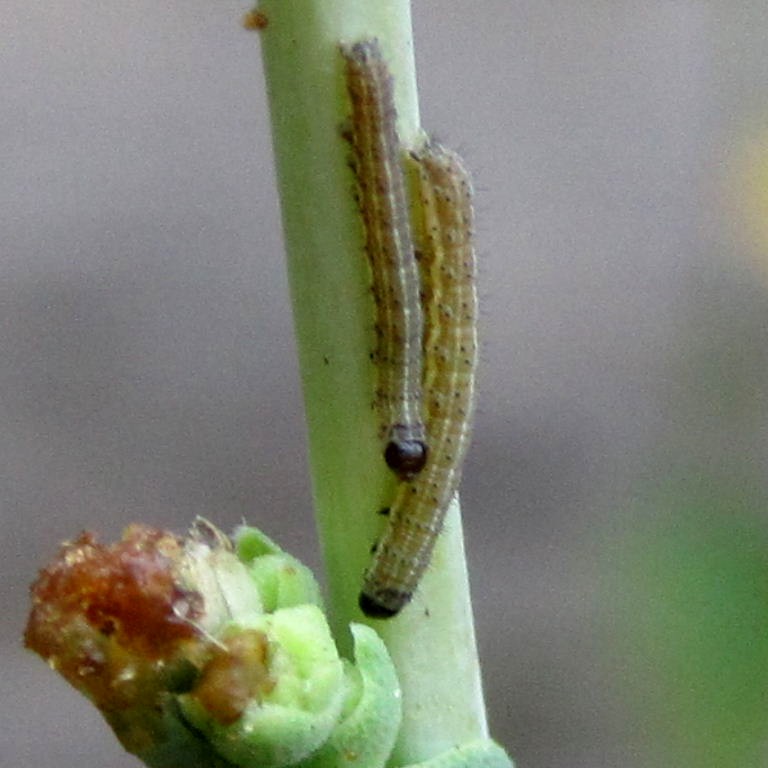Small Quaker Moth Caterpillar Orthosia cruda

Above is the caterpillar of a Small Quaker moth, taken in May. They grow to some 30mm and overwinter
as pupae. Main food plants are deciduous trees such as oak and willow, but several other trees and shrubs have been noted.


These caterpillars look like young Small Quaker caterpillars which have not yet developed their spotted faces
(about a week old) but they are unlikely to be Small Quakers since they are on the wrong foodplant and at the wrong time of year.
Small Quaker moths fly (and lay eggs) in April and May in the UK and the caterpillars appear in early summer and feed on deciduous trees
(especially oak and willow). While there are oaks and willows nearby, these eggs were laid at the end of July on lettuce flower heads.
The caterpillars hatched in early august and fed on the lettuce buds.



The eggs laid on the lettuce flower buds at the end of July were reddish-brown.



The eggs turned dark grey just before the tiny caterpillars emerged in August. The caterpillars initially
ate the egg cases.



The caterpillars then spent a week or so crawling over the lettuce stem, appearing to eat the flower
buds or stem sap (not the lettuce leaves). Even if the strange weather in 2020 prompted a second (or delayed) brood of Small Quaker,
that doesn't explain the choice of food plant. -- Or maybe it does, since most deciduous trees were in full leaf (or thinking of
autumn) and the eggs are usually laid on the buds of the trees, the caterpillars then invading the buds as they are on this lettuce.



They grew bigger on that diet over the week or so but disappeared after heavy rain (may have gone elsewhere
to feed up and pupate or been predated by birds). They never developed the speckled head pattern of later Small Quaker caterpillars.

